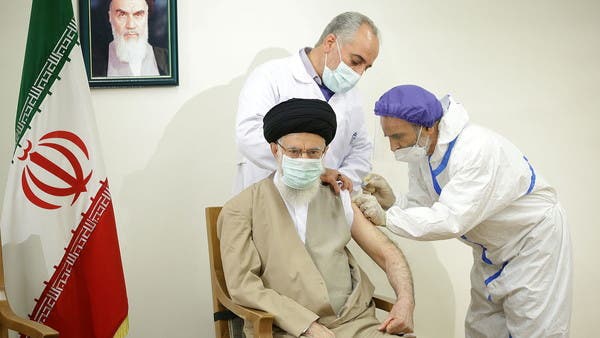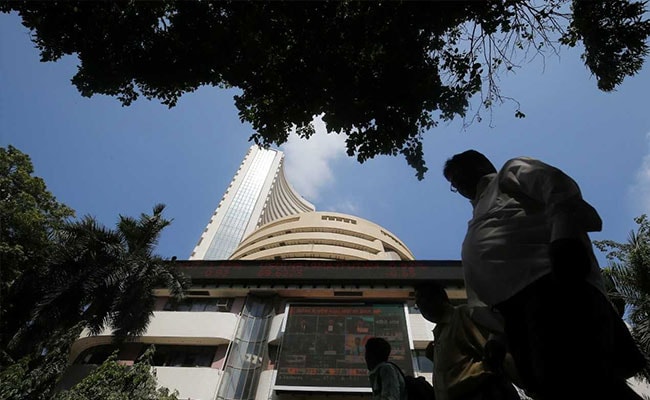
International pressure to bring an end to the raging conflict between Israel and Hamas militants mounted on Sunday, even as local health officials said an Israeli airstrike in Gaza overnight killed at least two dozen people, the single deadliest attack of the current hostilities.
The dead included women and children, the Gaza Health Ministry said in a statement to The Associated Press.
On Sunday morning, rescue workers combed through the rubble of three buildings flattened in the Israeli airstrike as the hostilities between Israelis and Palestinians escalated to levels not seen since a 2014 war.
With the conflict stretching into its seventh straight day, the United States stepped up its diplomatic engagement and the United Nations Security Council was scheduled to meet to discuss the conflict for the first time on Sunday.
Prime Minister Benjamin Netanyahu of Israel vowed late Saturday to continue striking Gaza “until we reach our targets,” suggesting a prolonged assault on the coastal territory even as casualties rose on both sides.
In separate calls on Saturday, President Biden conferred with Mr. Netanyahu and Mahmoud Abbas, president of the Palestinian Authority, about efforts to broker a cease-fire. While supporting Israel’s right to defend itself from rocket attacks by Hamas militants, Mr. Biden urged Mr. Netanyahu to protect civilians and journalists.
Even before Sunday morning’s attack, Israeli airstrikes had intensified over the weekend, with an attack on a house in a refugee camp in Gaza that killed 10 members of an extended family, including women and children, and another that destroyed a high-rise that housed media outlets including The A.P. and Al Jazeera.
Israeli defense officials said the building housed military assets belonging to Hamas and they provided advance warning to civilians in the building to allow evacuation. No casualties were reported in that strike.
More than 170 Palestinians had been killed in Israeli airstrikes and shelling in Gaza, and 12 Israelis had died in Hamas rocket attacks.
Over the past week, the 15-member U.N. Security Council met privately at least twice to discuss ways of reducing tensions. But efforts to reach agreement on a statement or to hold an open meeting had faced resistance from the United States, Israel’s biggest defender on the council.
American officials said they wanted to give mediators sent to the region from the United States, Egypt and Qatar an opportunity to defuse the crisis.
But with violence worsening, a compromise was reached for a meeting on Sunday at 10 a.m. Eastern time, to be held via videoconference because of pandemic restrictions, and streamed live on a U.N. website.
The American ambassador, Linda Thomas-Greenfield, said in a statement posted on Twitter after the meeting was announced that “the U.S. will continue to actively engage in diplomacy at the highest levels to try to de-escalate tensions.”
Security Council meetings on the Israeli-Palestinian issue have often ended inconclusively and served mainly as a platform for supporters of both sides to air their grievances. But they have also demonstrated the widespread view among United Nations members that Israel’s actions as an occupying power are illegal and that its use of deadly force is disproportionately harsh.
transcript
transcript
Israel Strikes Gaza Tower Housing A.P. and Other News Media
An Israeli airstrike destroyed a prominent building in Gaza City on Saturday that housed media outlets, including The Associated Press and Al Jazeera. The Israel Defense Forces said it gave an advanced warning for civilians to evacuate.
-
We are shocked and horrified that the Israelis would target the building that housed A.P.‘s bureau in Gaza. They long knew that A.P.’s bureau was there, and they targeted it. Now, fortunately, we had a warning, and we were able to get our journalists out. We narrowly escaped a huge loss of life. We had 12 journalists in that building. And those brave journalists not only got out, but they were able to salvage much of our equipment because it’s important that we continue to tell this story. You see, that building provided the best vantage point for the world to see the events in Gaza, and now that building is destroyed. And we will work hard to continue to tell the world the important events of Gaza, and we will keep our journalists safe.

The prominent 12-story building in Gaza City that was destroyed in an Israeli airstrike on Saturday not only housed the offices of media organizations including The Associated Press and Al Jazeera.
It also offered a vantage point for the world on Gaza, as A.P. cameras positioned on the roof terrace captured Israeli bombardments and Palestinian militants’ rocket attacks during periodic flare-ups in fighting — including over the past week.
“The world will know less about what is happening in Gaza because of what transpired today,” the A.P.’s president, Gary Pruitt, said in a statement following the Israeli attack.
The leveling of the al-Jalaa tower, which occurred as fighting between Israelis and Palestinians spiraled on several fronts, drew condemnations from across the world. The Israel Defense Forces said that its fighter jets struck the tower because it also contained military assets belonging to Hamas, the Palestinian militant group that rules the Gaza Strip.
Mr. Pruitt called on the I.D.F. to present evidence to support its allegation, adding that the news agency had operated from the building for 15 years.
“We have had no indication Hamas was in the building or active in the building,” he said. “This is something we actively check to the best of our ability. We would never knowingly put our journalists at risk.”
On Sunday, the I.D.F. tweeted that the building was “an important base of operations” for Hamas military intelligence, where it “gathered intel for attacks against Israel, manufactured weapons & positioned equipment to hamper I.D.F. operations.”
The I.D.F. — which frequently accuses Hamas of using civilians as shields — provided advance warning to civilians in the building to allow evacuation. The A.P. reported that the owner of the building, Jawad Mahdi, was “told he had an hour to make sure everyone has left the building.”
In the minutes before the airstrike, Mr. Mahdi was filmed desperately pleading with the Israeli Army, asking them to allow four journalists who had been filming an interview — with the father of four children slain in an Israeli strike on a refugee camp on Saturday morning — an extra 10 minutes to retrieve their belongings.
An Israeli soldier told him: “There will be no 10 minutes.”
Minutes later, the building was destroyed, engulfed in a plume of black smoke.
The A.P. said that it “narrowly avoided a terrible loss of life,” and that a dozen journalists and freelancers inside the building evacuated before the strike. The building also housed apartments on the lower floors.
Press freedom groups said that the strike — coming a day after the Israeli Army erroneously told foreign media that ground troops had entered Gaza — raised concerns that Israel was interfering with independent reporting on the conflict. In a statement, the New York-based Committee to Protect Journalists questioned whether the I.D.F. was “deliberately targeting media facilities in order to disrupt coverage of the human suffering in Gaza.”
A White House spokeswoman, Jennifer Psaki, tweeted that the United States had “communicated directly to the Israelis that ensuring the safety and security of journalists and independent media is a paramount responsibility.” United Nations Secretary-General Antonio Guterres said that he was “deeply disturbed” by the strike and warned that “indiscriminate targeting of civilian and media structures” would violate international law.
After the strike, journalists from other news organizations gathered near the rubble. Heba Akila, an Al Jazeera journalist who had been broadcasting from the tower when the warning call was made, said: “This is clearly to silence the truth and the voices of journalists.”
As the worst violence in years rages between the Israeli military and Hamas, each night the sky is lit up by a barrage of missiles streaking across the sky and the projectiles designed to counter them.
It is a display of fire and thunder that has been described as both remarkable and horrifying.
The images of Israel’s Iron Dome defense system attempting to shoot down missiles fired by militants in Gaza have been among the most widely shared online, even as the toll wrought by the violence only becomes clear in the light of the next day’s dawn.
“The number of Israelis killed and wounded would be far higher if it had not been for the Iron Dome system, which has been a lifesaver as it always is,” Lt. Col. Jonathan Conricus, an Israeli military spokesman, said this week.
The Iron Dome became operational in 2011 and got its biggest first test over eight days in November 2014, when Gaza militants fired some 1,500 rockets aimed at Isreal.
While Israeli officials claimed a success rate of up to 90 percent during that conflict, outside experts were skeptical.
The systems’s interceptors — just 6 inches wide and 10 feet long — rely on miniature sensors and computerized brains to zero in on short-range rockets. Israel’s larger interceptors — the Patriot and Arrow systems — can fly longer distances to go after bigger threats.
The Iron Dome was recently upgraded, but the details of the changes were not made public.
In the current conflict, militants in the Gaza Strip have fired nearly 3,000 missiles, the Israeli Air Force said on Sunday, noting that about 1,150 of them had been intercepted.

Our Jerusalem bureau chief, Patrick Kingsley, examined the events that have led to the past week’s violence, the worst between Israelis and Palestinians in years. A little-noticed police action in Jerusalem was among them. He writes:
Twenty-seven days before the first rocket was fired from Gaza this week, a squad of Israeli police officers entered the Aqsa Mosque in Jerusalem, brushed the Palestinian attendants aside and strode across its vast limestone courtyard. Then they cut the cables to the loudspeakers that broadcast prayers to the faithful from four medieval minarets.
It was the night of April 13, the first day of the Muslim holy month of Ramadan. It was also Memorial Day in Israel, which honors those who died fighting for the country. The Israeli president was delivering a speech at the Western Wall, a sacred Jewish site that lies below the mosque, and Israeli officials were concerned that the prayers would drown it out.
Here is his full account of that night and the events that later unfolded.

As the conflict between Israel and Hamas stretched into its seventh day, pro-Palestinian demonstrations were held in cities around the world, even as leaders across Europe expressed concern about a rise in anti-Semitic attacks.
On Saturday, hundreds of demonstrators in Washington marched from the Washington Monument to the U.S. Capitol in protest of Israel’s treatment of the Palestinian people and what they said was an inadequate response from the United States.
“People think they can be neutral about this. That’s absolutely wrong,” said Alexandra-Ola Chaic, 17, who traveled to the rally from Burke, Va., with her family, which is of Palestinian descent. “We have to do what we can to make this an issue that receives political support.”
The crowd that gathered was diverse in age and background, and included many families with young children.
Ruth Soto, 25, from Northern Virginia, came with her sister to show solidarity with Palestinians. She said the displacement of Palestinians felt personal to her because her family fled war in Central America to come to the United States illegally.
“We’ve seen the struggle, being displaced from your home,” she said. “This is a way we can help them.”
In London, a pro-Palestinian march on Saturday attracted thousands of protesters, and similar demonstrations were held in cities around the world.
At the same time, there was growing concern about a rise in attacks against Jews and Jewish institutions.
France banned a pro-Palestinian protest in Paris, citing the “sensitive” international context and the risk of acts of violence against synagogues and Israeli interests in the French capital.
Paris protest organizers pressed ahead on Saturday despite the ban. The police used tear gas and water cannons to disperse the rally, which had drawn about 3,000 people, Agence France-Presse reported.
This past week, German protesters attacked synagogues, burned Israeli flags and marched through the streets chanting slurs against Jews.
Felix Klein, a German official tasked with countering anti-Semitism, said: “It is appalling how obviously Jews in Germany are being held responsible here for actions of the Israeli government in which they are completely uninvolved.”
Britain experienced a sharp increase in the number of anti-Semitic incidents in the past week, a charity said on Saturday.
The Community Security Trust, a charity that records anti-Semitic threats, said it had received more than 50 reports of Jews across Britain being threatened and verbally abused in the past week — a 490 percent increase from the previous seven days. It said it believed that many more attacks had gone unreported.
Offensive phrases and slogans about the Israeli-Palestinian conflict have been shouted at Jewish people of all ages, including children, said Dave Rich, the charity’s director of policy. “When the conflict in Israel reaches this level of intensity, we always see increases in anti-Semitic incidents,” he said.

Israel’s top military spokesman on Saturday apologized to foreign journalists for wrongly announcing early Friday that Israeli troops had entered the Gaza Strip in a ground attack, insisting that it was an “honest mistake,” even after Israeli news outlets called it a deliberate deception aimed at luring Hamas fighters into Israeli gun sights.
Early Friday, the I.D.F. announced on Twitter that “air and ground troops are currently attacking in the Gaza Strip.” It later clarified that statement to say ground troops were firing into Gaza from Israel.
The spokesman, Brig. Gen. Hidai Zilberman, said he understood the “frustration” of journalists who reported as fact what turned out to be fiction. But he sought to assure Western reporters in Israel that no one was trying to turn them into tools of the Israeli military.
“Despite conspiratorial reports to the contrary in both international and Israeli press, this was not some elaborate attempt to manipulate the media in order to achieve a tactical victory,” General Zilberman wrote in a letter to the Foreign Press Association’s president, Andrew Carey of CNN.
“By definition and our guiding belief system, the I.D.F. Spokesperson’s Unit does not engage in psychological warfare and is tasked with conveying only the truth to the public, a mission we have devotedly undertaken for more than seven decades.”
Gen. Zilberman added no new details to explain how his office misled foreign journalists or why it had taken hours to correct itself. But he reiterated that the Israeli military’s relationship with foreign news organizations was “of paramount importance to us” and was “based on mutual trust and respect.”
The possibility that the military had used the international news media to kill fighters in Gaza prompted sharp objections from several news organizations.
“If they used us, it’s unacceptable,” said Daniel Estrin, N.P.R.’s correspondent in Jerusalem. “And if not, then what’s the story — and why is the Israeli media widely reporting that we were duped?”
For its part, the Foreign Press Association on Saturday protested an Israeli attack on a Gaza office tower that housed the offices of The Associated Press and Al Jazeera, saying in a statement that it “raises deeply worrying questions about Israel’s willingness to interfere with the freedom of the press to operate.”
A new round of deadly violence erupted in the Middle East over the past week, as Israeli airstrikes hit targets in Gaza and the militant group Hamas launched rockets at cities inside Israel.

There is no simple answer to the question “What set off the current violence in Israel?”
But in a recent episode of The Daily, Isabel Kershner, The New York Times’s Jerusalem correspondent, explained the series of recent events that reignited violence in the region.
In Jerusalem, nearly every square foot of land is contested — its ownership and tenancy symbolic of larger abiding questions about who has rightful claim to a city considered holy by three major world religions.
As Isabel explained, a longstanding legal battle over attempts to forcibly evict six Palestinian families from their homes in East Jerusalem heightened tensions in the weeks leading up to the outbreak of violence.
The always tenuous peace was further tested by the overlap of the Muslim holy month of Ramadan with a month of politically charged days in Israel.
A series of provocative events followed: Israeli forces barred people from gathering to celebrate Ramadan outside Damascus Gate, an Old City entrance that is usually a festive meeting place for young people after the breaking of the daily fast during the holy month.
Then young Palestinians filmed themselves slapping an ultra-Orthodox Jew, videos that went viral on TikTok.
And on Jerusalem Day, an annual event marking the capture of East Jerusalem during the Arab-Israeli war of 1967, groups of young Israelis marched through the Old City’s Muslim Quarter to reach the Western Wall, chanting “Death to Arabs” along the way.
Stability in the city collapsed after a police raid on the Aqsa Mosque complex, an overture that Palestinians saw as an invasion on holy territory. Muslim worshipers threw rocks, and officers met them with tear gas, rubber-tipped bullets and stun grenades. At least 21 police officers and more than 330 Palestinians were wounded in that fighting.
Listen to the episode to hear how these clashes spiraled into an exchange of airstrikes that has brought Israeli forces to the edge of Gaza — and the brink of war.

Listen to ‘The Daily’: The Israeli-Palestinian Crisis, Reignited
Rockets, airstrikes and mob violence: Why is this happening now, and how much worse could it get?




















More Stories
Pakistan’s FATF compliance: Loopholes in small savings accounts left deliberately for terror financing – Times of India
Roman Protasevich: Belarus jet drama dissident moved to house arrest
HK’s security chief promoted to No. 2 job amid US sanctions call